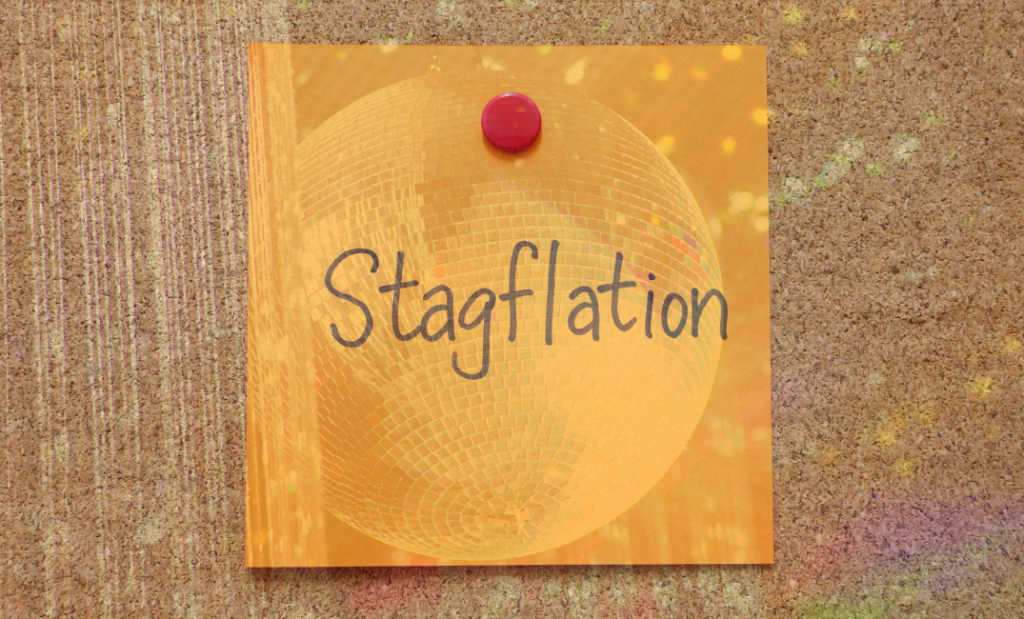Are we heading back to 70s-style stagflation?

Tim Richardson CFA, Investment Specialist
“This is nothing like the 1970’s, which was a pretty dismal period, and not just because of polyester and disco.” – Barry Ritholtz, CEO, Ritholtz Wealth Management
Fears that the global economy is about to experience a sustained period of high inflation alongside economic stagnation – or stagflation – as seen in the 1970s are probably unfounded.
Better central bank understanding of the risk, lower economic sensitivity to energy price rises, supply-side reforms, and low long-term inflation expectations, make today quite different from the ‘dismal decade’.
Even better, flares and disco are also unlikely to make a comeback anytime soon!
What is stagflation?
Stagflation is an extended period of very slow economic growth when inflation remains stubbornly high.
First coined by British politician Iain Macleod in 1965, it was widely used during the 1970s oil crises. This brought about a long recession with high unemployment and double-digit inflation.
Many economists had previously thought the combination of low economic growth and high inflation was impossible. The Phillips Curve describes an inverse relationship between unemployment and inflation; the trade-off between them was the focus of policy making.
What causes stagflation?
Stagflation often follows a sudden reduction in productive capacity, coming just after an unexpected, but sustained, increase in input costs.
During the 1973 oil crisis the Organisation of Petroleum Exporting Countries (OPEC) imposed an oil embargo on the West. The oil price quadrupled, leading to higher energy, transport and manufacturing costs. Inflation remained high for some time, even though unemployment jumped.
Parallels are drawn with the recent COVID lockdowns. This interrupted the supply of microchips and other key components, leading to a spike in prices of finished goods, bringing wider cost pressures.
The current supply and demand mismatch has brought the highest inflation we have seen for 40 years. Some economists fear higher interest rates will reduce capacity without bringing inflation down, heralding a return to stagflation.
So, are we headed for stagflation?
A 70’s-style period of high inflation with low growth is unlikely. This is due to some key differences between now and then – beyond the bad fashion sense of the ‘70s!
- Central banks now better understand stagflation and the importance of keeping inflation and inflation– expectations low. They recall how it was only after Paul Volcker became Chairman of the US Federal Reserve in 1979, and raised interest rates for an extended period, was inflation brought under control.
- Developed economies are much less dependent on energy than they were in the 1970s. The energy required to produce each US dollar of real GDP in the US has fallen by over half since 1975. This reflects the transition from energy-intensive manufacturing to services and more energy efficient transport, heating etc.
- Supply– side reforms introduced during the 1980s made the economy much more flexible and able to absorb supply shocks caused by higher input costs. These included lower direct taxes, reduced trade tariffs, central bank independence, deregulation and more flexible labour markets.
- Finally, inflation expectations are now much lower than in the 1970s, following years of low and stable price rises. Despite US September CPI inflation of 8.2%, long-term consumer inflation expectations were just 2.9%.
What does this mean for equity investors?
A return to 70’s style stagflation is unlikely; sustained higher interest rates will bring down inflation by reducing demand and slowing the economy. Hence, investment markets are expected to remain volatile for some time.
However, falling inflation should soon help stabilise interest rate expectations, giving businesses and consumers the confidence to make long-term plans.
Companies in growing sectors with good margins, moderate debt levels, and the ability to pass on cost inflation to customers will be well– placed to grow earnings in such an environment.
Groovy!


